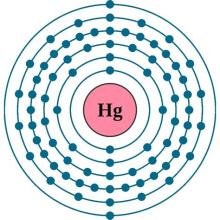Mercury mess: Wild bird sex stifled.
Jayasena, N, PC Frederick and ILV Larkin. 2011. Endocrine disruption in white ibises (Eudocimus albus) caused by exposure to environmentally relevant levels of methylmercury. Aquatic Toxicology http://dx.doi.org/10.1016/j.aquatox.2011.07.003.
Synopsis by Roxanne Karimi
Methylmercury alters hormone levels in shore birds, increasing male homosexuality and decreasing reproductive success.
Levels of methylmercury commonly measured in the environment disrupt hormone levels in both sexes of white ibis, a bird species that lives in US southeast coastal marshes. Altered courtship and chick rearing behaviors tied to the hormone changes reduced reproduction. This result could impact wild populations.
The experimental study is among the first to show that methylmercury can act as an endocrine disruptor and reduce reproductive success in wildlife. Importantly, effects were seen at low and chronic exposures that would be typical in the wild.
The findings, reported by scientists from the University of Florida, also align with results from previous studies that examined mercury's effects on reproduction in ibis, other wild bird species and fish.
Hormone changes in males were more erratic with some males nesting with other males. The changes in hormone levels were more pronounced in males bonded with other males compared to those bonded with females.
Mercury is a metal naturally found in soil and rocks. It is a common global pollutant that persists in the environment and the body. Coal burning at power plants is one of the primary ways that mercury is released into the atmosphere. From there, mercury enters water bodies and is taken up by aquatic animals, including fish.
Most wildlife and people are exposed through diet to mercury in its organic form – known as methylmercury. Predators and other animals high in the food chain are particularly at risk of exposure, because methylmercury concentrations increase at higher levels of the food chain.
White ibis fit this category. The wading birds eat insects and small fish. Exposure can lead to numerous health effects, including neurological brain and nerve effects as well as developmental impairment and changes in the immune system.
Whether mercury can also act as an endocrine disruptor to change hormones and possibly impact reproduction is not clear. Some scientists think that endocrine and reproductive functions might be more sensitive to mercury exposure than others.
In previous field studies, scientists found that chronic exposure to methylmercury levels often found in the environment led to an increase in the number of male-male pairings in white ibises. The male-male pairings, in turn, reduced egg production. Sex hormones – estradiol and testosterone – were suspected of playing a role in this process.
To test this, the authors fed male and female ibises one of three controlled diets, starting at 90 days old and continuing for 3 1/2 years. The diets contained either no, low, medium or high levels of methylmercury that are similar to levels found in their normal prey items. The scientists recorded reproductive behavior (such as displays, nesting) and success (including number of eggs or chicks) of the pair associated with each nest. They also measured hormone levels in bird droppings during part of the experiment.
They found that, after taking into account the effects of the breeding season, methylmercury exposure led to marked changes in estradiol and testosterone levels in both females and males. Mercury-exposed females generally had lower concentrations of both hormones.
However, the changes in hormones were inconsistent from year to year and among different exposure concentrations. Given that, there were still clear links between methylmercury-driven hormone levels, reproductive behavior changes and decreased reproductive success.
This study is one of the first to document endocrine disruption from chronic, low-level methylmercury exposure in birds. The study suggests environmentally realistic concentrations of methylmercury may compromise wild populations of these birds.

